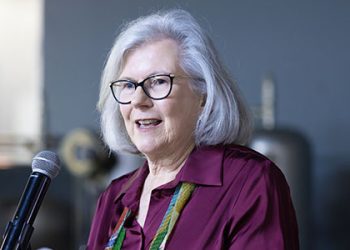There is a small percentage of women participation in STEMi and these spaces have always been occupied and dominated by men, mainly white males. “My perception is that the gender gap has always been significantly widening and it is taking a long time to reach equilibrium”; this is the view of Angelinah Masolo, a PhD archaeology student at the University of Pretoria.
Stone Age landscape
Masolo says gender discrimination is still rife in the STEMi environment and as a “woman of colour it is extremely challenging to be heard and valued in such spaces”. She says most of the time she is perceived as a symbol of transformation in her field of study because she is a woman of colour. She says she gets personally annoyed to be regarded as a symbol of transformation instead she wants to be judged on the basis of her qualifications and experience.
Masolo says her current “PhD research seeks to understand social and cultural changes that occurred from the mid-Holocene (6 000 BP) period and explores its impact on Stone Age landscape patterns such as settlement habits, resource exploitation patterns and social dynamics”.
San communities
Masolo says her study has a major impact on people who associate themselves with the history or ancestral lines of hunter-gatherer communities such as San communities who are indigenous dwellers of South Africa. “Such communities are poorly represented and continue to be marginalised within South African history and heritage. Hopefully, this research will illuminate hunter-gatherer communities and place value on the crucial roles they played in shaping the cultural history and heritage of modern day South Africa,” adds Masolo.
Early primary school education
Masolo was born in a small town named Jane Furse, located in the Sekhukhune District Municipality in the Limpopo Province. At the age of seven her family moved to another small town called Lephalale further north of the Limpopo Province where she attended Laerskool Bosveld Primary School. She came back to Jane Furse to complete her high education at St Mark’s Comprehensive College. Upon completing her matric, Masola enrolled for an archaeology degree at the University of the Witwatersrand.
Inquisitive mind
Growing up Masolo says she was an inquisitive child who was always keen to ask difficult questions; a trait that her father encouraged her to embrace. “I could say that the people that had a huge influence in my career developments are my parents and my primary school teachers,” says Masolo.
Asked why she chose to pursue the STEMi stream, Masolo says she has always been keen to work outside and to understand how the various environments work. “Consequently, I pursued the STEMi stream as a means to unpack the curiosity I have regarding different types of environments and to gain more knowledge and understanding about past humans and their general prehistory,” says Masolo.
Unearthing past objects
She says what she enjoys most about her career is being outside and collecting data, specifically through foot surveys and excavations. “Excavations are quite amazing because they give opportunities for unearthing objects left behind by past humans in the ground. I also enjoy foot surveys on archaeological sites because it gives a sense of how past peoples might have navigated and experienced the landscape during their time on set areas or environments,” says Masolo. She says STEMi is vital in that it provides a platform for individuals to apply their knowledge and skill sets in various streams of science. It also enables people to answer a variety of questions pertaining to the human past and their behaviours can be challenged.
Tackling gender inequalities
To address insufficient numbers of women in STEMi, Masolo says women should be seen as perfectly capable individuals who are able to apply their own skills and knowledge in STEMi. She argues that women and men study the same subjects yet they are treated differently and are also not afforded the same opportunities in the science sector. “I think that is how it should be resolved: women being seen and acknowledged as capable individuals who can carry out the work the very same way men can, regardless of their skin tone or backgrounds, especially when perfectly qualified,” Masolo says.
Career highlights
Some of Masolo’s career highlights include:
- receiving her qualification certificates from WITS
- being an archaeological laboratory and field technician for Bokoni Farmscapes Project at WITS’ school of geography archaeology and environmental studies (GAES), Archaeology Division and
- being nominated to be a representative for archaeology post-graduate students at WITS during Master’s degree studies.
Masolo says these opportunities not only helped shaped her into the archaeological researcher she is today but they also aided her to learn more about academia and how various students experiences can be in the field of archaeology and on campus in general.







